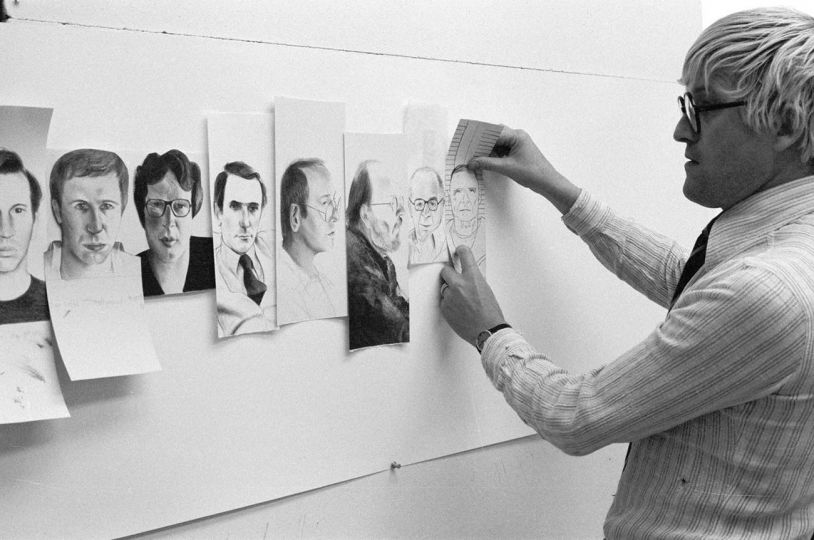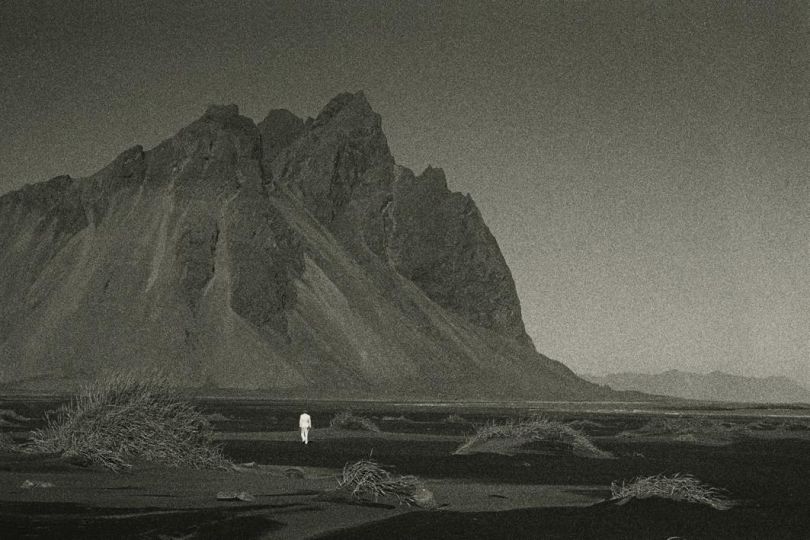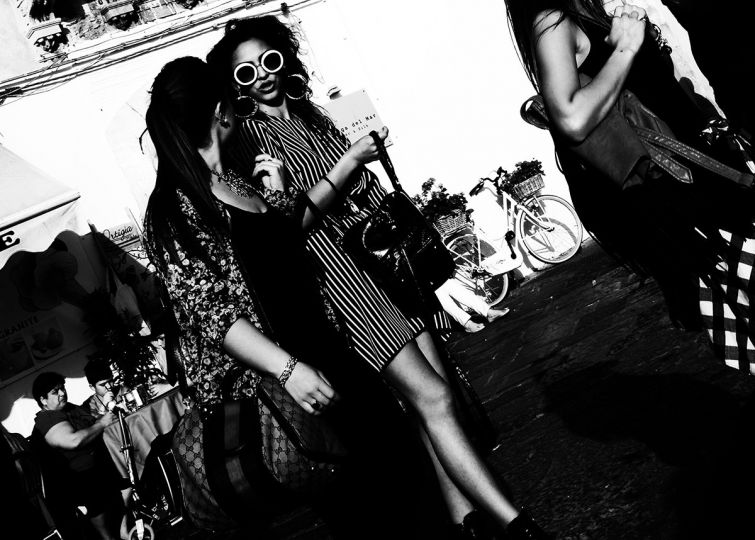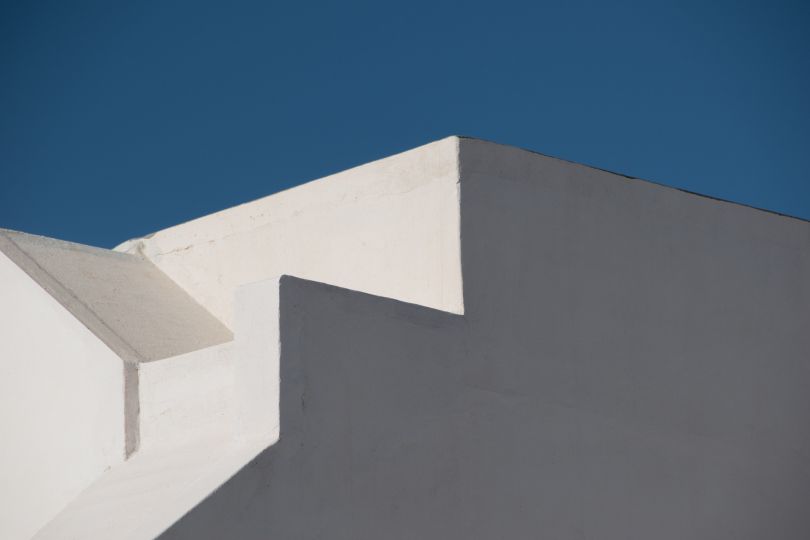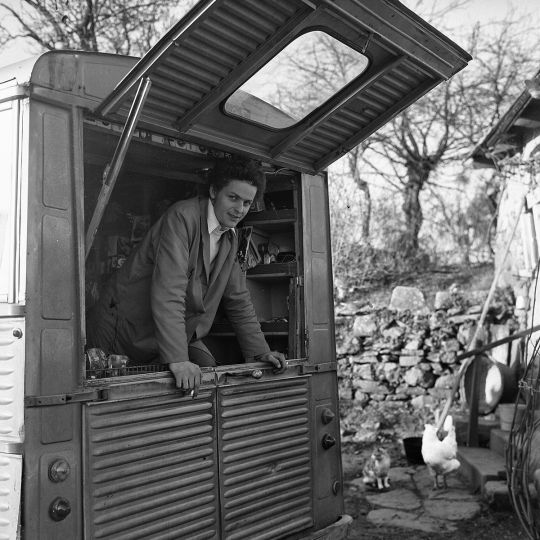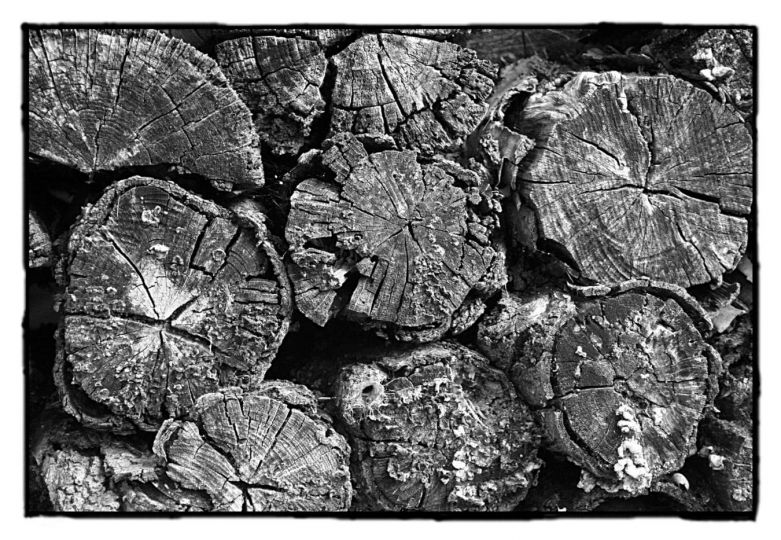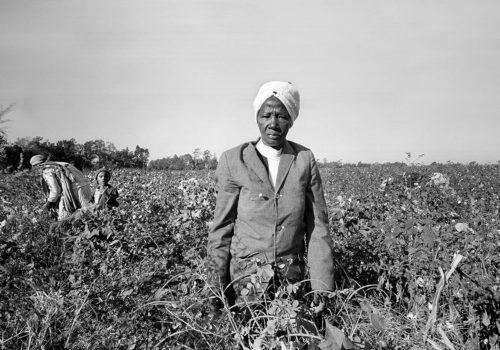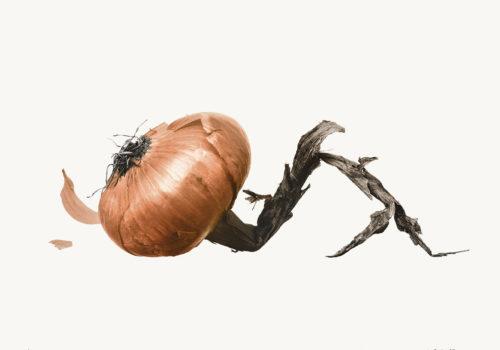Annie Gentils Gallery, Antwerpen: Marie Cloquet & Marc De Blieck
Marc De Blieck (BE 1958, lives & works in Warburg Germany) ) (images 1-3)
Marc De Blieck started out as a painter, but soon turned to photography. The public appreciated his painting, to De Blieck’s frustration, mainly for the skill with which it was made, while he wanted to divert attention away from his technical prowess to a form of “pure looking”; instead of taking note of a unique signature, the viewer had to become part of an optical experience. In trying to extract himself from the photographic process, he undermines any authorial claim (he’s not the ‘one who knows’). One way of diluting his authorship consists in subjugating himself to a rigorous system that takes the decision in his place, as in ‘The Meydenbauer Legacy’ (2008) for instance where he used the system of photogrammetry to ‘select’ his viewpoint.
His photographical work is an ongoing exploration of the photograph as an event – rather than the photograph as the report of an event, De Blieck has applied various strategies, often subtly activating the act of looking itself, by sometimes folding the work and assembling the different parts into another composition . In his most recent works, many images randomly cycle through “pixels” of circa 1 by 1 cm, all with a different plane of focus, thus disconnecting the point of focus from the point of interest. Marc De Blieck will have a solo exhibition at SMAK Ghent , spring 2025 and a soloshow in our gallery in September 2024.
Marie Cloquet (° BE 1976, lives and works in Gent (BE)) (images 4-6)
Marie Cloquet’s large-scale hybrid paintings are neither paintings nor photographs, but an unclassified overlap of both. By reconstructing the places where they were created, Cloquet’s landscapes ignore the dividing line distinguishing nature from culture, the organic from the built in.
The artists interplay of Land Art, photography, and painting stages an event of declassification, an undifferentiated constellation of places and times, an idiosyncratic experience of the world. It combines varying registers of reality, undermining the distinction between phases of matter, between the animate and the inanimate, the substantial and the imaginary. It exercises a fluid, elastic state of things established upon a potential of primal energy through which everything can be recreated over again. (text Ory Dessau).
Annie Gentils Gallery
Peter Benoitstraat 40
2018 Antwerpen Belgium
Wednesday – Saturday 2 PM – 6 PM
mail (ad)anniegentilsgallery.com
M: +32 477 756 721
Galerie Bigaignon, Paris: Yannig Hedel, Máté Dobokay, Thomas Paquet
Yannig Hedel (F, 1948) (image 7)
Yannig Hedel tracks the passage of time in urban architecture, and for over 40 years has been building up a body of work of remarkable finesse and coherence, with an absolute mastery of grey.
The work on display, ‘De Labore Solis’, is a true representation of the passage of time that the artist has created over more than six years. Over the course of minutes, months and years, Yannig Hedel photographed the same façade like a cinema screen, capturing each variation in the sunlight. This masterful composition of 45 period prints is the only one that is complete today.
Máté Dobokay (Hu 1988) (image 8)
The artist Máté Dobokay continues the long Hungarian tradition of navigating between conceptual art and experimental photography, constantly pushing back the boundaries of the medium.
The works on show are part of the ‘Homage to Simon Hantai’ series, in which the artist has adapted the Hungarian painter’s folding technique to the raw materials of photography. The chemicals penetrate the folds of the paper, which has been crumpled and immersed in the developer, leaving imprints that are revealed when the support is laid flat. In this way, the surfaces that have come into contact with the liquid have blackened, while the parts that have not been touched remain white, revealing a kind of canopy of light.
Thomas Paquet (F Can 1979) (image 9)
Thomas Paquet is undertaking a photographic study of his fundamental characteristics: light, space and time.
The work on display is a cyanotype from the ‘L’ombre des heures’ series, which uses light as both a writing tool and a subject of study. The protocol is similar to that of a painter: the artist brushes cotton paper with photosensitive liquid (a 19th-century technique), places it on a board pricked with needles, and then exposes it to the sun. The paper turns blue because of the effect of the UV rays in the sky, revealing the fine white shadows of the gnomons: in an inverted eclipse, the shadow becomes light.
Galerie Bigaignon
18, rue du Bourg-Tibourg,
75004 Paris, France
Open Tuesday to Saturday, from 11pm to 7pm.
T +33.(0)1.83.56.05.82
Galerie Nathalie Obadia, Parijs, Brussel : Valérie Belin
Valérie Belin (F 1964, lives & works in Paris, France) (images 10-12)
Valérie Belin’s work focuses on the body and the boundary between the living and the inanimate. Through the treatment of light and contrast, the proportions of the prints and other skilfully orchestrated parameters, she plays with uncertainty. When you look at her images, it’s hard to tell the real from the virtual. No context, no setting, a systematically neutral background: her work is based on a precise protocol of serial mode and surgical precision, erasing all particularism in favour of a form of beauty that is smooth, impersonal, artificial and standardised. In this way, she questions stereotypes, conventions and codes of representation – social, media, cinematographic, conveyed by fashion, the luxury goods industry, etc. – through a very specific treatment of the subject. –
The French artist creates monumental images of the world in monochrome or hyper-saturated colour, at the crossroads of still life, studio portraiture and concepts drawn from minimalist sculpture. Her photographic practice over the last twenty years has produced a body of work that stands out for its ability to consider in depth the plasticity of the medium, exploring artifice and illusion as well as notions of collection and space. Halfway between portraiture and still life, Valérie Belin questions the mimetic qualities of art: “Much more than a figurative medium, photography gives me the opportunity to probe the evanescent boundaries between reality and illusion, to reveal the profound supernaturalism of my work.
GALERIE NATHALIE OBADIA
3, rue du Cloître Saint-Merri –
75004 Paris
Monday – Saturday 11 am – 7 pm
+33 (0) 1 42 74 67 68
91, rue du Faubourg Saint-Honoré –
75008 Paris
Tuesday – Saturday 11 am – 7 pm
+33 (0)1 53 01 99 76
8, rue Charles Decoster –
1050 Ixelles, Brussels
Tuesday – Saturday 10 am – 6 pm
+32 (0) 2 648 14 05
Galerie Ron Mandos: Erwin Olaf
Erwin Olaf (1959-2023) (Dutch) (images 13-15)
Erwin Olaf was known for his diverse practice that centred around society’s marginalised individuals, including people of colour, and the LGBTQ+ community. In 2019, Olaf became a Knight of the Order of the Lion of the Netherlands after 500 works from his oeuvre were added to the collection of the Rijksmuseum. Taco Dibbits, Rijksmuseum director, called Olaf “one of the most important photographers of the final quarter of the 20th century”.
In 2015, Olaf created the series Anger & Tamed inspired by the terrorist attacks in Paris and the assassinations at Charlie Hebdo in particular. In the same period, he worked on the series Skin Deep: a tribute to the beauty of the human body. The naked body fascinates him, but at the same time he argued “just as the smile was stolen by publicity, so the representation of genitalia was stolen by pornography”. Skin Deep needed to put the body and sexuality back at the centre. Skin Deep invites us to refocus on a more balanced and human approach to the body and to sexuality.
Galerie Ron Mandos
Prinsengracht 282
1016 HJ Amsterda£
Wednesday – Saturday 12:00 – 18:00
Sunday 12:00 – 17:00
+31 20 3207036
mail(ad)ronmandos.nl
Gallery FIFTY ONE Antwerpen: Bruno V. Roels, Harry Gruyaert, Michael Wolf, Katrien De Blauwer, Saul Leiter.
Bruno V. Roels (BE 1976, lives and works in Ghent, Belgium) (images 16-17)
Bruno Roels divides his time between writing and photographing. He considers the act of printing (turning a photograph into a tangible object) as important as the act of photographing itself. He photographs almost nonstop, documenting his entire life, building a sizable archive. In his dark room he uses that archive to explore the analogue photographic process. Rather than trying to make ‘the perfect gelatin silver print’ he assumes that all prints are perfect and gives all variations equal attention.
He’s looking for poetry, and photographic truth, in sequences and fluctuations. Details in his photographs may become lead motives in bigger compositions, and obvious subject matter is reduced to abstract information through numerous reiterations.
Harry Gruyaert (BE 1941, lives and works in Paris, France) (images 18-20)
Originally dreaming of becoming a film director, Harry Gruyaert studied at the Narafi (now a campus of LUCA school of Arts) in Brussels from 1959 to 1962. Shortly afterwards he left Belgium at the age of 21, fleeing the strict catholic environment in which he was raised. He travelled extensively across Europe, North Africa, Asia and the United States and lived in cities with a vibrant film and photography scene like Paris and London. During his first trip to New York in 1968, he discovered Pop artists like Roy Lichtenstein and Robert Rauschenberg. This encounter made him appreciate the creative potential of colour and encouraged him to search for beauty in everyday elements for the rest of his career. Around the same time Gruyaert befriended the American artists Richard Nonas and Gordon Matta-Clark and photographed their work. Further inspired by the visual impulses on his first trip to Morocco in 1969, he decided in the second half of the 1970s to commit himself entirely to colour photography.
Gruyaert’s cinematographic background instilled in him an aesthetic conception of photography. Rather than telling stories or documenting the world through his lens, he searches for beauty in everyday elements. His images are simply snapshots of magical moments in which different visual elements, primarily colour, form, light and movement, spontaneously come together in front of his lens.
Michael Wolf (GER 1954-2019) (images 21-22)
Michael Wolf’s photography is that of an outsider. Born in Germany, raised in the United States and Canada, returned to Germany to study photography before spending the vast majority of his career in Asia, his unusual background has allowed him to make the ‘other’ his home. Wolf began his career as a photojournalist, spending over a decade working in Asia for the German magazine Stern. His willingness to explore different visual approaches, even abandoning the camera altogether to work with emerging image technology such as Google Street View, showed his ability to constantly renew and enrich his visual language.
From the architecture of Hong Kong’s tower blocks to the relentless compression of the Tokyo subway, from issues of privacy and voyeurism in the urban environment to the phenomenon of mass production within the increasingly globalized world of modern art, each of his series reveals a new facet of life in the city, assembling a complex, nuanced view that raises as many questions as it provides answers.
Although he was constantly exploring new subjects and visual approaches, Michael Wolf’s central theme always remained the same, from his first series in a German mining village to his most recent work in Asia … people, and the reality of their lives in our ever-changing cities. Michael Wolf won first prize in the World Press Photo competition in 2005 and 2010, and received an honourable mention in 2011. In 2010 and 2016 he was nominated for the Prix Pictet photography award.
Katrien De Blauwer (BE 1969, lives and works in Ronse, Belgium) (images 23-24)
Katrien De Blauwer was born in the small provincial town of Ronse in Belgium. After a troubled childhood, she moved to Ghent at a young age to study painting. Later De Blauwer attended the Royal Academy of Antwerp to study fashion. Although she would never finish her fashion studies, it was at that time that De Blauwer made her first collage books; studies and mood boards for fashion collections. These ‘notebooks’, as she would later call them and which she keeps to this day, are filled with sketches, image and text fragments and quotes taken from books, newspapers and magazines. They bring together various influences from literature, art, music, fashion, cinema, etc., which ultimately permeate her artistic work. After her studies, De Blauwer began collecting, cutting and recycling images as a way of therapeutic self-examination, a practice she is still developing today.
Saul Leiter (US 1923-2013) (images 25-27)
Although Edward Steichen exhibited some of Saul Leiter’s color photographs at the Museum of Modern Art in 1953, for forty years afterwards they remained virtually unknown to the art world. Leiter moved to New York in 1946 intending to be a painter and through his friendship with the abstract expressionist Richard Pousette-Dart he quickly recognized the creative potential of photography. Though he continued to paint, exhibiting alongside Philip Guston and Willem de Kooning, Leiter’s camera became — like an extension of his arm and mind — an ever-present interpreter of life in the metropolis.
The semi-mythical notion of the ‘New York street photographer’ was born at that time, in the late-1940s. But Leiter’s sensibility — comparable to the European intimism of Bonnard, a painter he greatly admires — placed him outside the visceral confrontations with urban anxiety associated with photographers such as Robert Frank or William Klein. Instead, for him the camera provided an alternative way of seeing, of framing events and interpreting reality. He sought out moments of quiet humanity in the Manhattan maelstrom, forging a unique urban pastoral from the most unlikely of circumstances.
GALLERY FIFTY ONE
Zirkstraat 20
2000 Antwerp, Belgium
Tuesday to Saturday from 1 – 6 pm
T +32(0)3 289 84 58£
E info (ad) gallery51.com
johndevos.photo (ad) gmail.com





